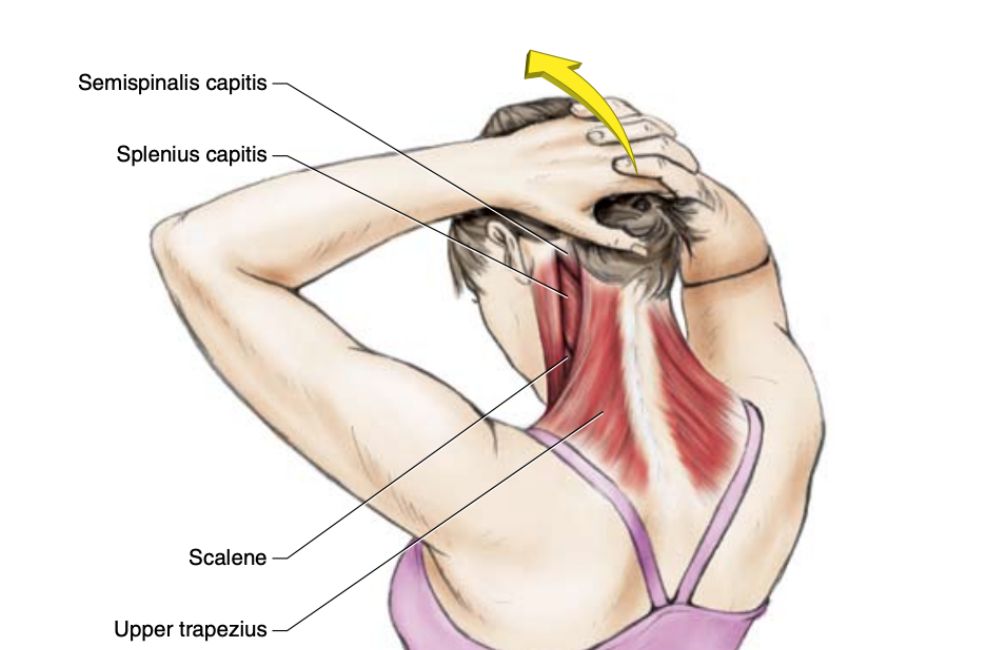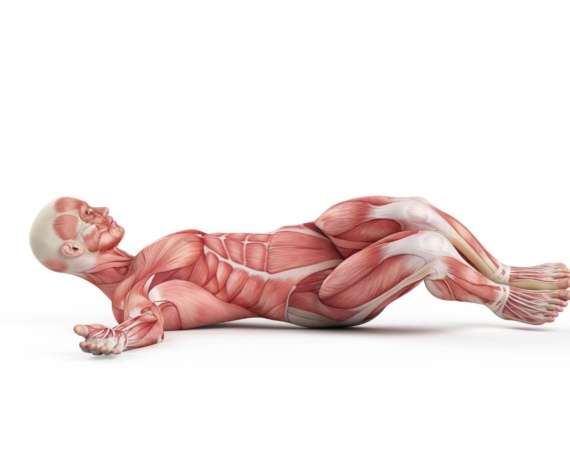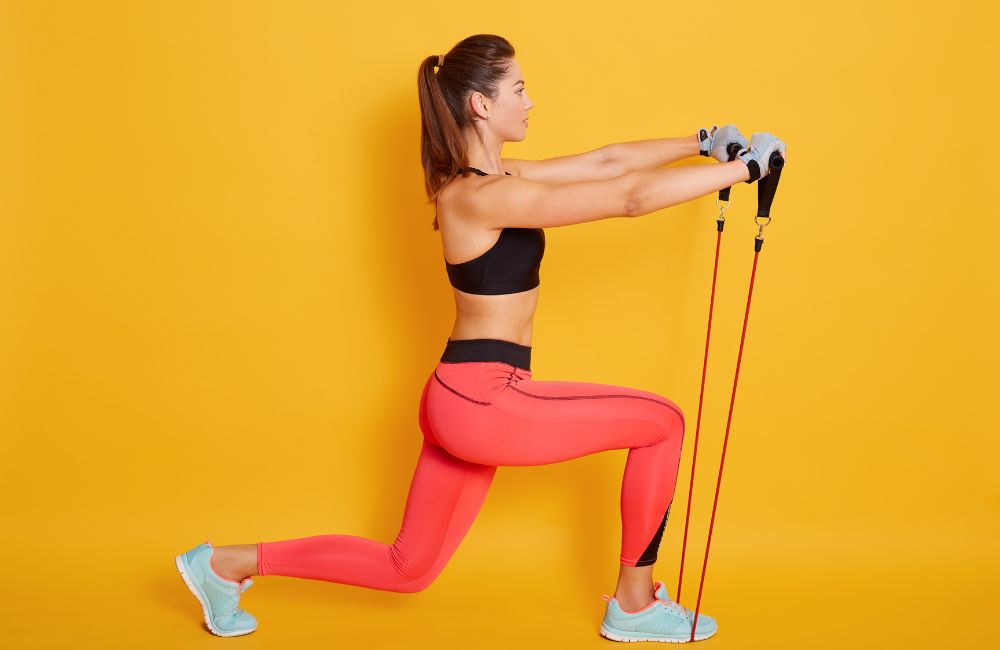
If you’ve ever been to the gym or watched an online training video, you’ve probably seen resistance bands in action.
But if you haven’t incorporated them into your workout routine yet, now is the perfect time to start. By leveraging the principles of resistance training, these bands can help you build muscular strength and coordination.
According to the American Heart Association, most age groups should engage in some form of resistance training at least twice a week.
I often recommend resistance bands to my clients because they’re inexpensive, portable, and take up minimal space. You can easily toss them in your suitcase or carry-on, and they won’t clutter up your home like bulky weights or other resistance equipment.
One of the benefits of resistance bands is their versatility. Unlike weights that rely on gravity for resistance, these bands provide multi-directional resistance, challenging your muscles throughout the entire range of motion.
This can be particularly beneficial for targeting smaller muscles that may be difficult to isolate with traditional weights. Research has shown that resistance bands can be highly effective for building strength and improving overall fitness.
If you’ve never used resistance bands, start with a set that comes with multiple bands with varying levels of resistance. This will allow you to try out different resistance levels and find the one that works best for you. As you get stronger, you can challenge yourself with heavier bands.
You don’t need complicated exercises to use resistance bands. Simply adding a band to your usual workout routine can make it harder.
This can help you get better results when you feel like you’ve hit a wall. Here are some simple exercises that you’re probably already doing that you can do better with a resistance band.
7 Best Resistance Band Exercises to Work Your Abs, Butt, Shoulders, and Arms
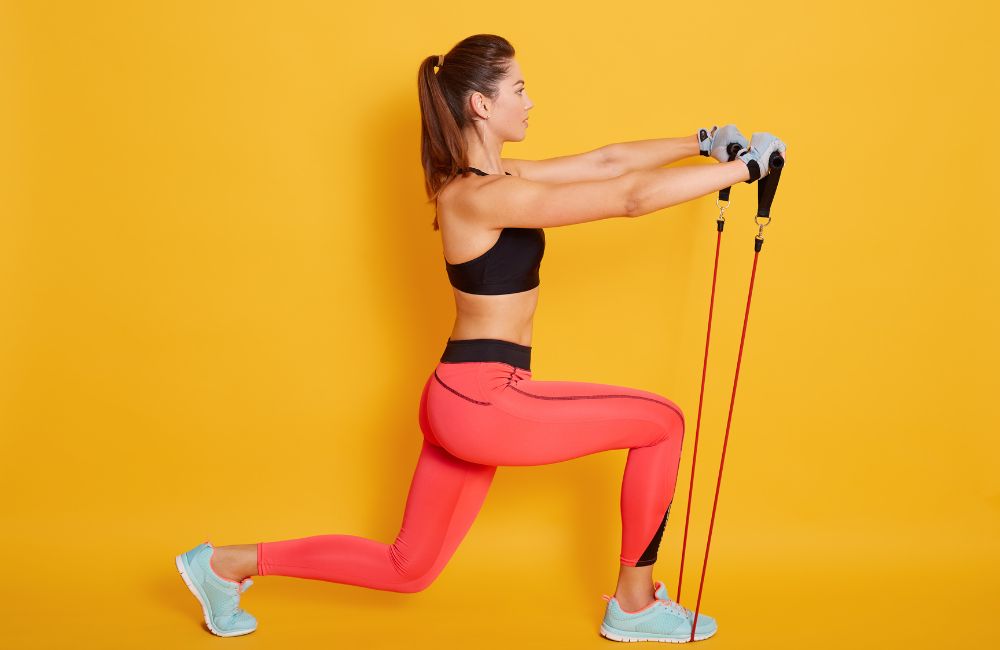
You’ll also like:
33 Best Resistance Band Exercises for a Full-Body Workout
1. Clamshells
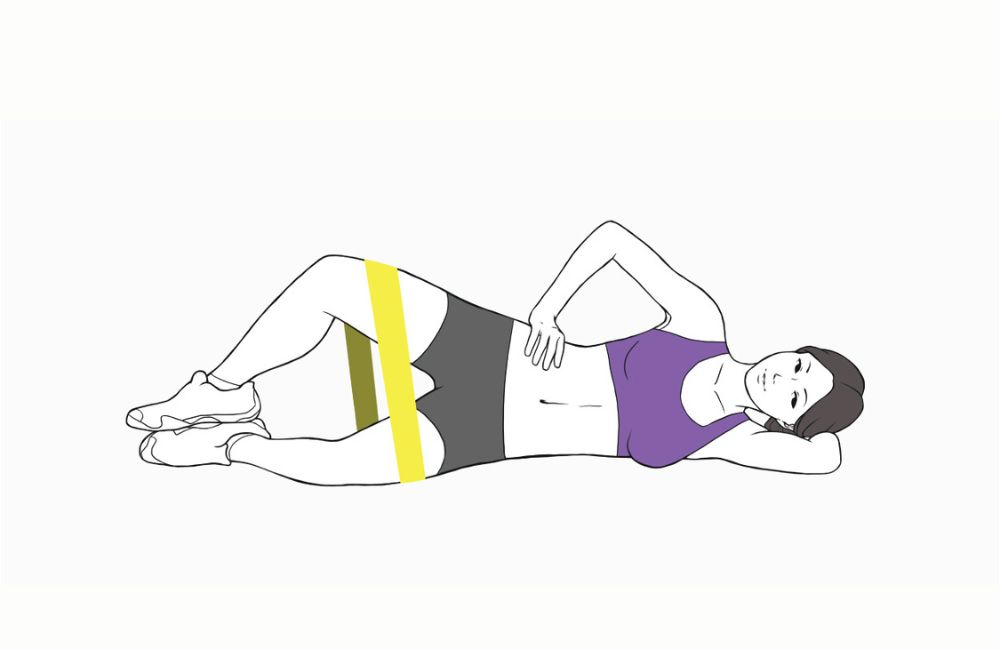
Clamshells are great for building glute strength and can be done in different positions.
Here’s how to do supine or side-lying clamshells:
- Lie on your back or side with the band looped around your thighs just above your knees.
- Rotate your legs out to the sides, putting tension through the band.
- Slowly return to the starting position.
- Do 10-15 reps, for 3 sets per session.
2. Supine Bridges
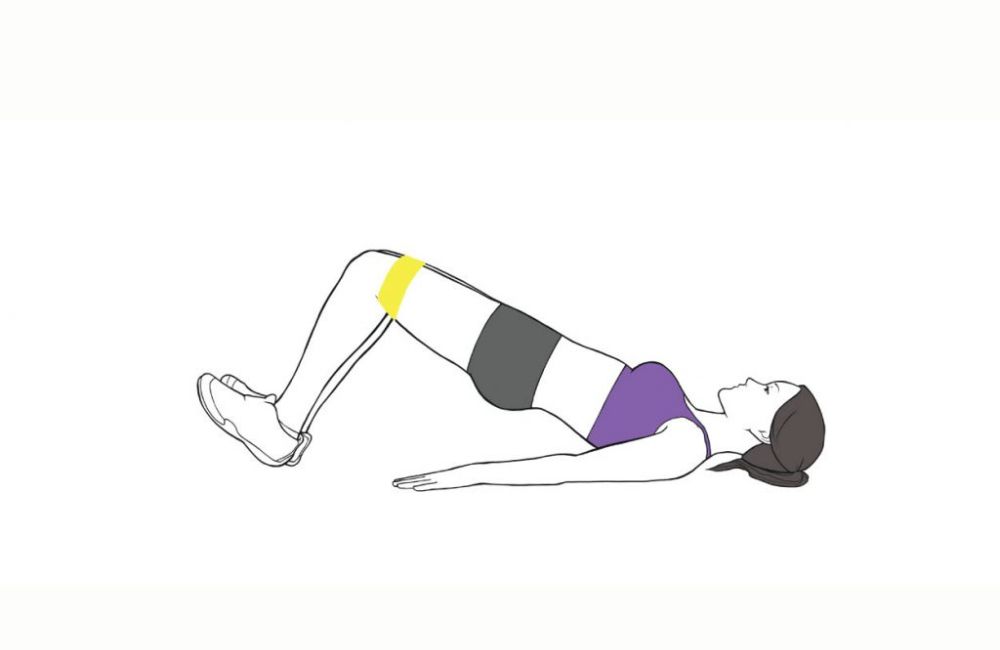
Bridges are a great exercise for building strength and stability in your glutes. Not only that, they help support proper posture and prevent back aches.
Here’s how to do supine bridges:
- Lie flat on your back with your feet flat on the ground and your knees bent.
- Loop the band around your thighs just above your knees.
- Push down into the ground to lift your hips up toward the ceiling.
- Slowly lower back down to complete the rep.
- Do 10-12 reps per set, for 3 sets per session.
3. Banded Squats
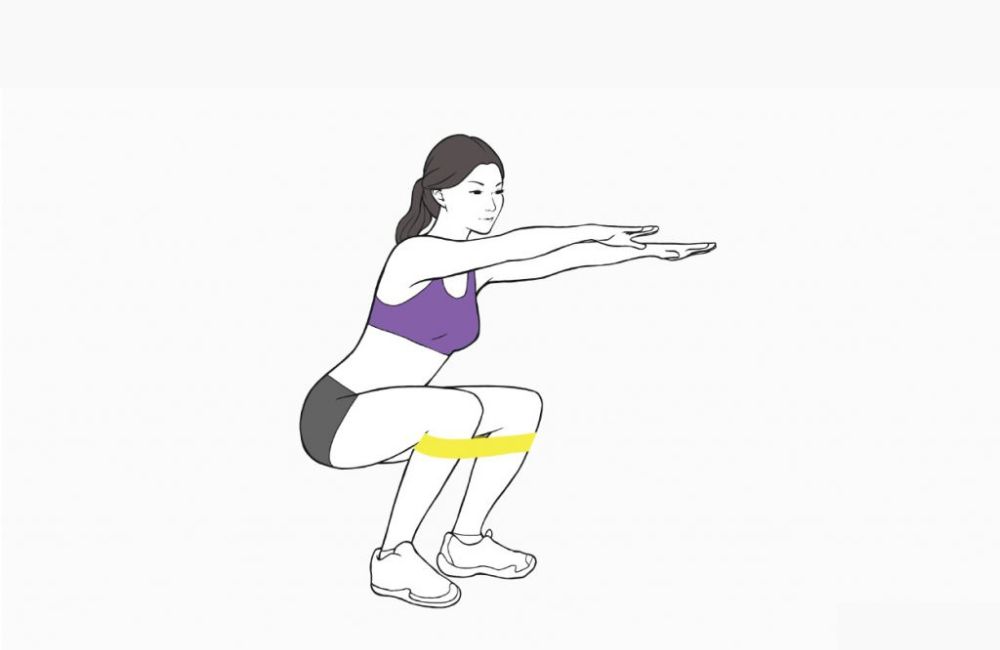
Bodyweight squats are a great lower-body exercise. However, by adding a resistance band, you can make them even more effective.
How to Perform:
- Stand in the middle of the band with both feet.
- Pull the band up and wrap it right below the knees.
- Hinge your hips and sit down as low as you can, then stand back up to complete the squat.
- Complete 10-12 reps per set, for 3 sets per session.
4. Prone Hamstring Curls
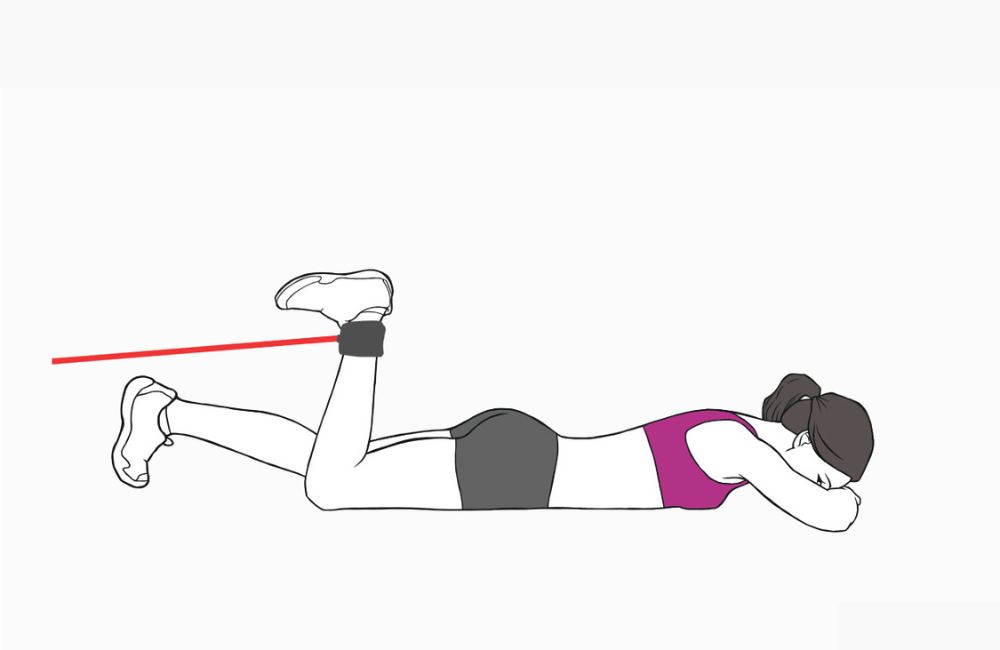
The hamstrings should be an important part of your lower body workouts. It’s essential to keep them strong to prevent hamstring strains.
Here’s how to do prone hamstring curls:
- Attach the band to a stable point a few inches above the ground.
- Lie on your stomach on a bench or on the floor.
- Loop the band around both ankles.
- Bend your knees and try to bring your heels to your buttocks.
- Return to the starting position.
- Do 10-15 reps per set, for 3 sets per session.
5. Standing Band Chest Press
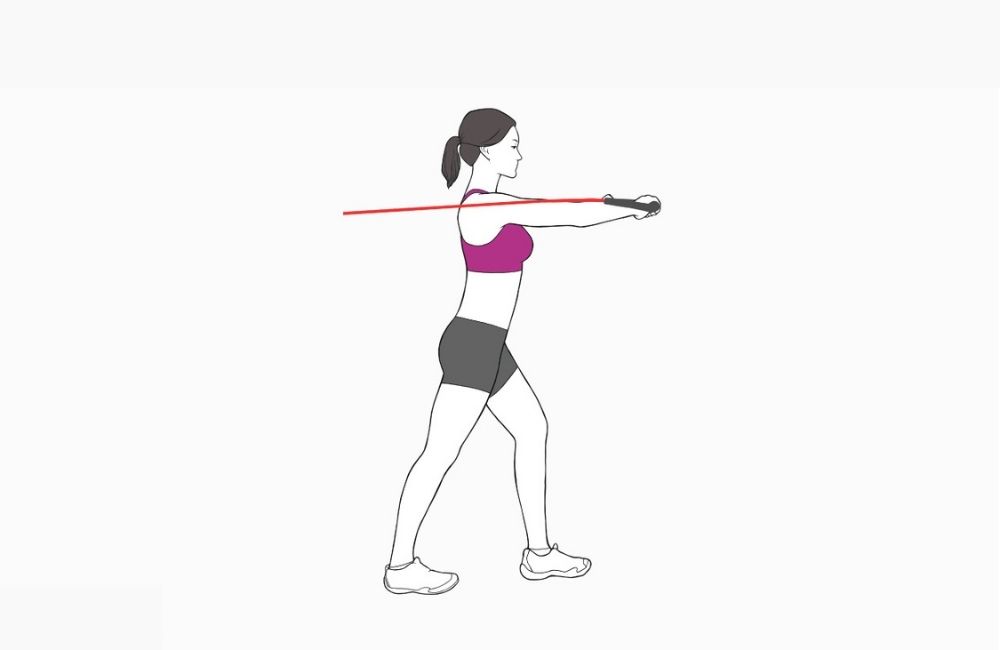
If you’re new to weightlifting, this variation on the bench press is perfect for you. By performing the move while standing, you can use your body weight to your advantage and push through the resistance of the band.
How to Perform:
- Find a sturdy attachment point on the wall at chest height and securely fasten the band to it.
- Facing away from the wall, grab both ends of the band and take a staggered stance.
- Press the band forward, then slowly allow your hands to return to your chest/armpit area.
- Complete 10-15 reps per set for 3 sets per session.
6. Seated Row
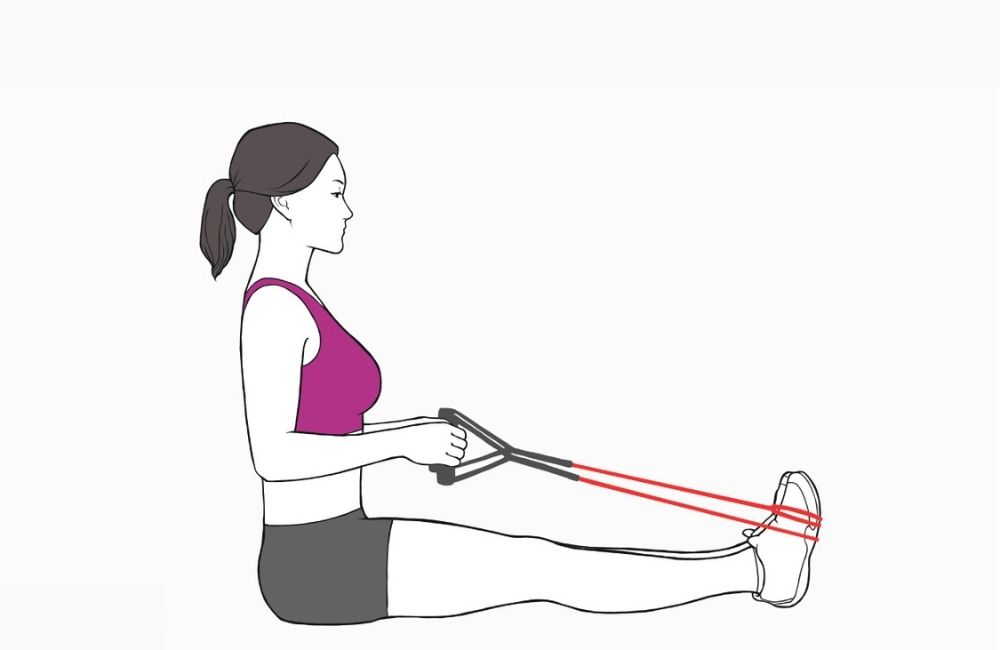
Seated rows are a great alternative to the bent-over row. They are much more comfortable for people who suffer from back pain.
How to Perform:
- Sit on the floor with both of your legs out straight.
- Wrap the resistance band around the feet and grasp both ends.
- Perform a row by squeezing your shoulder blades together and bending your elbows.
- Return to the starting position with control to complete the rep.
- Perform 10-15 reps per set, for 3 sets per session.
7. Double Tricep Kickback in Standing
While many people focus on their biceps, it’s important not to neglect the triceps. This three-headed muscle makes up the bulk of the upper arm, so it’s essential to keep it strong and healthy.
How to Perform:
- Hold the handles of the band in each hand.
- Stand in the center of the band and kick one leg back behind you for stability.
- Bend forward at the waist.
- With your upper arms in line with your trunk, extend your elbows straight behind you.
- Slowly bend your arms back to the starting position to complete one repetition.
- Perform 12-15 repetitions per set, and aim for 3 sets per session.

